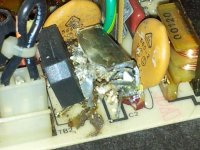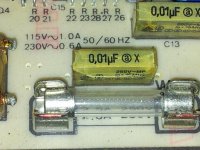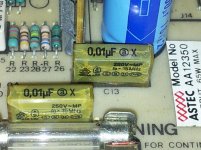ChrisCwmbran
Experienced Member
More questions from me, re my Kaypro II this time.
The machine was completely untested so I took the top off and took a look inside. Everything is relatively clean and looked in order, so I decided to try powering it on!
The floppy drives made sounds consistent with whirring, and then two loud electrical cracking noises and a big cloud of smoke!
I think one flash came from the horizonal board below the back of the tube, and one from the vertically mounted board on the back of the machine.
Advice please?
How can I ensure there is no residual charge in the thing, so I can safely take the main board out to examine the two smaller boards?
Thanks again!
The machine was completely untested so I took the top off and took a look inside. Everything is relatively clean and looked in order, so I decided to try powering it on!
The floppy drives made sounds consistent with whirring, and then two loud electrical cracking noises and a big cloud of smoke!
I think one flash came from the horizonal board below the back of the tube, and one from the vertically mounted board on the back of the machine.
Advice please?
How can I ensure there is no residual charge in the thing, so I can safely take the main board out to examine the two smaller boards?
Thanks again!




